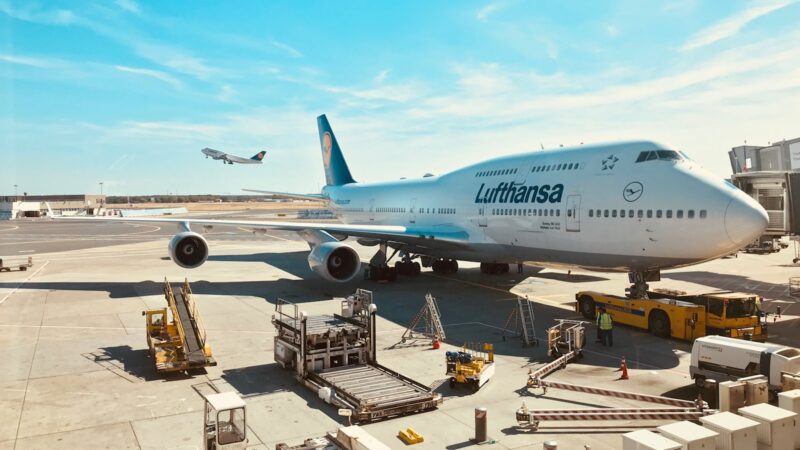Is it expensive to travel in spain? The short answer: Spain is generally more affordable than many other Western European destinations. Depending on your travel style, here’s a quick breakdown:
- Budget travelers can expect to spend around €50-70 per day.
- Comfort seekers might aim for €100-150 a day.
- If you prefer luxury, plan for at least €200+ daily.
Exploring Spain on a shoestring budget is not just possible, it’s exhilarating. From vibrant tapas in local bars to the rich history of iconic landmarks, there’s no shortage of experiences that won’t break the bank. While cities like Barcelona and Madrid can be pricier, charming smaller towns offer wallet-friendly options. Spain’s public transportation and delicious yet affordable local cuisine make it a dream for budget-conscious travelers.
I’m Gabrielle Reese VT, a seasoned traveler and travel blogger with a rich background in guiding travelers on cost-effective journeys. Leveraging my travels and love for cultural exploration, I specialize in providing insights into is it expensive to travel in spain.
Is it expensive to travel in spain terminology:
– barcelona tourist spots
– best beaches in mallorca spain
– flying to spain
Table of Contents
ToggleIs it Expensive to Travel in Spain?
When planning a trip, a common question is: Is it expensive to travel in Spain? The answer is often pleasantly surprising. Spain is usually more affordable than many Western European countries like France or Germany. Here’s how Spain stacks up against the USA and tips for those traveling on a budget.
Cost Comparison: Spain vs. USA
Traveling in Spain offers great value for money, especially when compared to the USA. For instance, meals in local Spanish eateries can cost as little as €5-10, while similar meals in the USA might set you back $15-20. Public transportation is another area where Spain shines. A single metro ride in Madrid or Barcelona costs around €1.5-2.5, whereas in cities like New York, you’re looking at about $2.75 per ride.
Budget Travel in Spain
Accommodations: Spain offers a variety of budget-friendly lodging options. Hostels in major cities range from €25-70 per night, depending on the season and location. For those seeking an authentic experience, consider Couchsurfing or housesitting. These options are not only economical but also offer a chance to connect with locals.
Food: Spain’s culinary scene is both diverse and affordable. Tapas, a staple in Spanish cuisine, are perfect for budget travelers. Many bars offer free tapas with a drink, making it possible to enjoy a meal for just a few euros. For a more substantial meal, look for a menu del dia—a three-course lunch menu that typically costs €15-20.
Transportation: Spain’s public transportation system is extensive and cost-effective. High-speed trains like RENFE offer quick travel between cities, with tickets ranging from €30-80, especially if booked in advance. For even cheaper options, buses like ALSA provide inter-city travel for €10-20.
Spain: A Budget Traveler’s Dream
For those willing to explore beyond the tourist hotspots, Spain offers numerous affordable experiences. Smaller towns like Granada or Córdoba provide rich cultural experiences without the hefty price tags of larger cities. Walking tours, often free or tip-based, offer insights into Spain’s history and culture.
In conclusion, while certain areas and experiences in Spain can be pricey, it is entirely possible to travel Spain on a budget. With smart planning and a sense of trip, you can enjoy all that this vibrant country has to offer without breaking the bank.
Accommodation Options
Finding a place to stay in Spain doesn’t have to break the bank. Whether you’re a backpacker or looking for something a bit more comfortable, Spain has options for every budget.
Hostels
For budget travelers, hostels are a fantastic option. They’re plentiful across Spain, from busy cities to quaint villages. A dorm bed typically costs around €25 per night, though prices can rise in popular tourist areas like Barcelona during peak season. Hostels are not just for young backpackers; they offer a social atmosphere that many travelers enjoy.
Hotels
Hotels in Spain range from budget to luxury. Budget hotels provide basic amenities and are kind to your wallet. You can expect to pay less by opting out of extras like room service. If you’re looking for a unique experience, consider staying in a boutique hotel, which often features local art and themed rooms.
Airbnb
Airbnb offers a middle ground between hostels and hotels. It’s ideal for those who want a bit more privacy or are traveling in groups. Prices vary depending on location and season, but you can often find a comfortable apartment for less than a hotel room.
Couchsurfing
For the adventurous, Couchsurfing offers a chance to stay with locals for free. It’s a great way to dive into Spanish culture and meet new people. However, comfort levels can vary, and choose hosts with good reviews.
Housesitting
Housesitting is perfect for long-term travelers. You stay in someone’s home for free while taking care of their property and often their pets. This can be a cozy and cost-effective way to experience life like a local, though it requires flexibility in travel dates and locations.
WWOOFing and WorkAway
If you’re open to working a bit during your travels, WWOOFing (World Wide Opportunities on Organic Farms) and WorkAway are excellent choices. In exchange for a few hours of work per day, you receive free accommodation and meals. It’s not glamorous, but it’s an enriching way to see Spain and save money.
Each of these options has its pros and cons, but with a bit of research and planning, you can find the perfect fit for your budget and travel style. Whether you’re mingling in a hostel, enjoying the comforts of a hotel, or living like a local through Couchsurfing or housesitting, Spain offers a range of accommodations to suit every traveler.
Next, let’s explore how to get around Spain efficiently and affordably.
Transportation in Spain
Navigating Spain is a breeze, thanks to its well-connected transportation network. Whether you’re zipping between cities or exploring local areas, there are plenty of options to suit every travel style and budget.
Public Transport
Spain’s cities offer extensive public transport systems that are both affordable and efficient. Buses and metros are the go-to for city travel, with major cities like Madrid and Barcelona boasting comprehensive networks. In places where metros aren’t available, buses and trams fill the gap. A single bus or metro ticket typically costs around €1.50 to €2. For frequent travelers, consider purchasing a multi-journey ticket or travel card to save money.
RENFE and High-Speed Trains
For intercity travel, trains are a popular choice. RENFE operates Spain’s national railway service, including the high-speed AVE trains. These trains connect major cities like Madrid, Barcelona, and Seville in a fraction of the time it takes by road. While high-speed trains are pricier, they offer comfort and speed. Booking in advance can snag you discounts, with fares starting from €20-€30 for shorter routes.
ALSA Buses
If you’re on a tighter budget, ALSA buses are an excellent option for traveling between cities. They’re safe, clean, and often much cheaper than trains. For example, a bus from Barcelona to Madrid can cost as little as €9 if booked early. ALSA’s extensive network covers even smaller towns, making it a versatile choice for reaching less touristy destinations.
Flights
For long distances, such as traveling from the north to the south of Spain, flights might be worth considering. Low-cost airlines operate between major cities, with prices sometimes rivaling those of trains, especially if booked well in advance. However, when factoring in airport transfers and security checks, flying is often best for longer journeys.
Summary
Spain’s transportation system is versatile and budget-friendly, making it easy to explore the country’s diverse landscapes and cultures. Whether you prefer the speed of trains, the affordability of buses, or the convenience of flights, there’s a mode of transport to suit your needs.
Next, we’ll dig into the delicious world of Spanish cuisine and dining, where you can savor local flavors without spending a fortune.
Food and Dining
Exploring Spain’s culinary scene is a treat for the senses, and it doesn’t have to break the bank. Whether you’re indulging in tapas or sitting down for a menu del dia, there’s something for every palate and budget.
Tapas
Tapas are small, savory dishes that are perfect for sharing. They can be as simple as olives or as elaborate as gambas al ajillo (shrimp in garlic). In some cities like Granada, ordering a drink often comes with a free tapa, making it an affordable way to sample local flavors. This tradition is a great way to enjoy a meal without spending much. A night out enjoying tapas typically costs around €10-€15 per person.
Paella
No trip to Spain is complete without trying paella, a traditional rice dish hailing from Valencia. It’s often cooked with saffron and can include seafood, chicken, or vegetables. While it can be pricey in tourist areas, authentic paella at local restaurants is usually more affordable. Expect to pay between €12-€20 for a serving.
Menu del Dia
For a hearty and cost-effective meal, look out for the menu del dia. This is a fixed-price menu offered at lunchtime in many restaurants. It typically includes a starter, main course, dessert, and a drink (often wine or water) for around €15-20. It’s an excellent way to enjoy a full meal and experience local cuisine.
Local Cuisine
Beyond tapas and paella, Spanish cuisine offers a variety of regional specialties. In the north, try the tortilla española, a thick omelette with potatoes and onions. In Andalusia, gazpacho—a refreshing cold tomato soup—is a must-try. Each region has its own unique dishes, allowing you to taste the diversity of Spain without overspending.
Drinks
Spain is also known for its delightful drinks, from the refreshing tinto de verano (red wine with lemonade) to the classic sangria. Enjoying a drink at a local bar can be quite affordable, with a glass of wine or a beer typically costing between €2-€3. If you’re in Granada, ordering a drink often comes with a free tapa, making it an even better deal.
Spain’s food and dining scene is both delicious and wallet-friendly. Whether you’re savoring tapas, indulging in paella, or enjoying a menu del dia, there’s a wealth of flavors to explore without straining your budget.
Next, let’s explore some of Spain’s top activities and attractions, where history and culture come to life.
Activities and Attractions
Spain is a treasure trove of history, culture, and vibrant experiences. Whether you’re marveling at iconic landmarks or enjoying local festivals, there’s something for everyone—and it doesn’t have to cost a fortune.
Sagrada Familia
The Sagrada Familia in Barcelona is a must-see. This awe-inspiring basilica, designed by Antoni Gaudí, is a masterpiece of modernist architecture. While the exterior is free to admire, entering the basilica costs around €26. For a more immersive experience, consider the timed entry ticket for €33.80 which allows you to skip the lines and explore at your own pace.
Alhambra
In Granada, the Alhambra is another can’t-miss site. This UNESCO World Heritage site showcases stunning Moorish architecture and offers breathtaking views. Entry to the Alhambra costs €19.09, but for a faster entry, opt for a fast-pass ticket at €24.59. Remember to book tickets in advance, as they often sell out quickly.
Free Walking Tours
For budget travelers, free walking tours are a fantastic way to explore Spanish cities. These tours are available in major cities like Madrid, Barcelona, and Seville. Guides work on a tip basis, so you can pay what you feel the tour was worth. It’s a great way to learn about the city’s history and culture without spending much.
Museums
Spain’s museums are rich with art and history. While some, like the Prado Museum in Madrid, charge an entrance fee, many offer free entry on certain days or times. Check the schedules to plan your visit. In Bilbao, the Guggenheim Museum is a modern art lover’s dream, with entry costing €15.
Festivals
Spain is famous for its lively festivals, which offer a glimpse into the country’s vibrant culture. Participating in events like La Tomatina in Buñol costs around €12. Many festivals are free to attend and provide a unique opportunity to experience Spanish traditions firsthand.
Exploring Spain’s activities and attractions doesn’t have to be expensive. Whether you’re visiting iconic landmarks like the Sagrada Familia and Alhambra, joining a free walking tour, or soaking in the local culture at a festival, there are plenty of affordable ways to enjoy what Spain has to offer.
Next, we’ll answer some frequently asked questions about traveling in Spain, including budgeting and seasonal considerations.
Frequently Asked Questions about Traveling in Spain
How much should I budget for a trip to Spain?
When planning a trip to Spain, accommodation, food, and transportation are the main expenses you should consider.
-
Accommodation: Prices vary by city and season. In popular cities like Barcelona or Madrid, a hostel bed can range from €25 to €70 per night, while a double room in a hotel might cost between €60 and €150. For budget travelers, options like Couchsurfing or housesitting can significantly reduce costs.
-
Food: Dining in Spain is quite affordable. A simple breakfast of churros con chocolate or pan con tomate can cost around €5. Enjoy a full meal with a menu del dia for lunch, typically priced at €15-20. For dinner, tapas are a cost-effective and delicious option.
-
Transportation: Spain’s public transport is extensive and budget-friendly. Buses between major cities cost around €10-20, with high-speed trains ranging from €30 to €80 depending on the route and booking time. Within cities, metro and bus rides are about €1.5-2.5 per trip.
Is Spain expensive for tourism?
Spain is generally more affordable than many other European countries, although costs can fluctuate based on the cost of living in different regions and seasonal variations. For instance, the summer months can see a spike in prices due to increased demand. However, the overall cost of living in Spain remains lower compared to countries like France or the UK.
In 2023, Spain saw a record number of tourists, with visitor spending rising by 27% in the first quarter. This increase is partly attributed to efforts in developing the luxury market, but budget travel options remain accessible.
How much money do I need for a week in Spain?
For a week in Spain, your daily expenses will depend on your travel style. On average, budget travelers might spend around €60-100 per day, covering accommodation, food, and transportation. Here’s a rough breakdown:
- Accommodation: €20-50 per night in hostels or budget hotels.
- Food: €20-30 per day if you opt for local eateries and tapas.
- Transportation: €10-20 per day, depending on your travel plans.
Spending money for activities and attractions will vary. While some sites like the Sagrada Familia and Alhambra have entry fees, many museums and festivals offer free or low-cost options.
With thoughtful planning, you can enjoy a fulfilling trip to Spain without breaking the bank. Next, we’ll wrap up with some budget-friendly travel tips and advice from Versed Traveler.
Conclusion
Traveling to Spain doesn’t have to be a costly endeavor. With the right strategies and a bit of planning, you can explore this vibrant country on a budget. At Versed Traveler, we are committed to providing you with comprehensive travel tips and advice to make your journey as smooth and affordable as possible.
Budget-Friendly Travel Tips:
-
Plan Ahead: Booking accommodations and transportation in advance can save you a significant amount. Look for deals on hostels, budget hotels, or consider alternatives like Couchsurfing or housesitting.
-
Accept Local Cuisine: Eating like a local can be both delicious and economical. Enjoy a menu del dia for lunch and indulge in tapas for dinner. These options offer a taste of Spain without straining your wallet.
-
Use Public Transport: Spain’s extensive and affordable public transport system makes getting around easy. Opt for buses or trains between cities and use metros or buses within cities to keep costs down.
-
Take Advantage of Free Attractions: Many museums and cultural sites offer free entry on certain days. Walking tours and exploring local markets are also great ways to experience the culture without spending much.
By following these tips, you can enjoy all that Spain has to offer without overspending. Whether you’re soaking in the architectural wonders of Barcelona or savoring the local flavors of Madrid, a memorable and budget-friendly trip awaits you.
For more detailed travel information and tips, visit our Travel Guide to Barcelona. At Versed Traveler, we’re your one-stop source for all things travel, ensuring you have the best experiences without breaking the bank.
















